 In 2010, the American College of Sports Medicine hosted the First World Congress for the “Exercise Is Medicine” (EIM) initiative in Baltimore, Maryland. The EIM enterprise is dedicated to improving health, wellness, and quality-of-life through regular physical activity and healthy behaviors. Together with the recommendations provided by the Physical Activity Guidelines for Americans, published by the US Department of Health and Human Services, EIM actively promotes the scientifically-based physical activity guidelines to facilitate the important health benefits of exercise and activity for all Americans, including persons with chronic disabilities. The clinical aim of EIM is to incorporate activity assessment and exercise prescription, when appropriate, as standard clinical operating procedure in the prevention and treatment of disease. The described objectives, undoubtedly, are inclusive of patients with Charcot-Marie-Tooth (CMT) Disease.
In 2010, the American College of Sports Medicine hosted the First World Congress for the “Exercise Is Medicine” (EIM) initiative in Baltimore, Maryland. The EIM enterprise is dedicated to improving health, wellness, and quality-of-life through regular physical activity and healthy behaviors. Together with the recommendations provided by the Physical Activity Guidelines for Americans, published by the US Department of Health and Human Services, EIM actively promotes the scientifically-based physical activity guidelines to facilitate the important health benefits of exercise and activity for all Americans, including persons with chronic disabilities. The clinical aim of EIM is to incorporate activity assessment and exercise prescription, when appropriate, as standard clinical operating procedure in the prevention and treatment of disease. The described objectives, undoubtedly, are inclusive of patients with Charcot-Marie-Tooth (CMT) Disease.
There exists an ever-increasing body of clinical and scientific information that exercise and activity, where not contraindicated, is safe and effective for children and adults with chronic disease, such as CMT. In fact, organizations such as the American Medical Association, the American College of Sports Medicine, the United States Department of Health and Human Services, and the Office of the United States Surgeon General, all agree that children and adults with chronic disease and disability, whom are capable, should engage in regular forms of activity and exercise.
Following are some frequently-asked-questions (FAQs) about physical exercise/activity for patients with CMT:
Who should exercise?
A. Children and adults, whom are able to, should participate in regular physical activity and exercise.
How much exercise/activity and what types of exercise/activity?
A. Children with CMT should participate in aerobic, muscle-strengthening, bone-strengthening, and balance exercises and activities.
– Collectively, this should amount to about one hour of exercise/activity per day. This should include at least three days of moderately-vigorous variable activity that is fun, age-appropriate, and not contraindicated for the individual child’s medical circumstances.
– Since CMT is both a motor and sensory neuropathy, it is important to recognize the individual limitations in order to minimize exposure to injury. In most cases, motor control and sensory awareness of the ankle and foot are impaired. Under these circumstances, activities involving running and jumping – or other activities where the feet intermittently or continuously leave the ground – may not be safe.
– Alternative exercises and activities should be considered, for example:
i. bicycle riding (particularly tandem riding, with the child at the front of the bike and parent/adult at the back of the bike);
ii. games of catching and throwing;
iii. swimming;
iv. resistance exercises (using the child’s own body weight, exercise bands, machines, and hand-held weights);
v. “exer-games” (video exercise/activity games on Wii, Playstation, or Xbox), and;
vi. certain martial arts (like tai chi)
– Additionally, children with CMT should be encouraged – as all children should – to participate in appropriate forms of play. If children have been prescribed orthopedic braces, these should be worn during exercise and activity where possible.
B. Adults with CMT should also participate in various forms of aerobic, muscle-strengthening, bone strengthening, and appropriate balance training.
– Ideally, it is recommended that adults with CMT should perform about 150 minutes of total aerobic exercise and activity per week. Such activity should be performed in moderate to moderately vigorous bouts of at least 10 minutes duration, spread throughout the week.
– Muscle and bone-strengthening exercises/activities – especially those involving simultaneous use of all major muscle groups – should be done at least two days per week. In cases where significant motor and sensory impairment of the ankle and foot are present, exercises and activities where the feet leave the ground, either intermittently or continuously, should not be performed.
– Some examples of less impactful exercise/activities include:
i riding or rowing exercise (stationary bike, tandem bike, recumbent bike, elliptical machines, rowing machines);
ii. swimming;
iii. water aerobics;
iv. vigorous gardening (with components like digging and lifting);
v. household chores (for example, sweeping, laundry, and putting groceries away);
vi. resistance exercises (with bands, machines, dumbbells, and/or bodyweight resistance)
vii. yoga, and;
viii. tai chi
– Though 150 minutes of total weekly exercise/activity is recommended, adult CMT patients should avoid inactivity; therefore, some physical activity is always better than none. Prescribed orthopedic braces should be worn during exercise and activity where possible.
Why are exercise and activity important and what are the potential benefits of a reasonably active lifestyle for CMT patients?
– For children with CMT, regular activity, including play, contributes to normal, healthy physical and psychosocial development. Certain clinical evidence indicates that early intervention may attenuate the disease process, possibly contributing to higher levels of function and quality-of-life into adulthood. Additionally, children who adopt an active lifestyle are less likely to be exposed to the eventual dangers of inactivity, including obesity, heart disease, and type 2 diabetes.
– For adults with CMT, regular exercise and activity, may improve, or at least maintain, functional ability, independence, and higher quality-of-life. Like all older adults, an active lifestyle helps to maintain muscle mass and bone health, as well as reducing incidence of falling and avoiding diseases associated with inactivity.
Who else should be involved in the process of exercise and activity participation?
– In all cases, health-care providers and appropriately-trained and credentialed exercise professionals should be consulted regarding individualized exercise and activity prescription for CMT patients, including assessment, evaluation, and program formulation/implementation.
– With regard to children with CMT, teachers and administrators within the educational system, should make reasonable accommodations to promote the described benefits of regular exercise and activity participation. Parents should insist that school systems adhere to the Americans With Disabilities Act and provide CMT children with the opportunity to engage in the process of normal, healthy development.
The EIM model has been endorsed by multiple, world-wide medical and healthcare agencies. Many of the tenets of this movement should be applied to patients with CMT. For more information, please visit the EIM website: www.ExerciseIsMedicine.org.
Robert D. Chetlin, PhD, CSCS, CHFS
West Virginia University School of Medicine
Morgantown, WV
About Dr. Chetlin: Dr. Chetlin is an Exercise Physiologist who joined the OT faculty in January of 2000. He is responsible for teaching the Foundation Sciences (Clinical Anatomy, Kinesiology, Exercise Physiology) to the first-year OT students. Dr. Chetlin earned both his Masters and PhD degrees in Exercise Physiology from the WVU School of Medicine. He is a professional member of the American College of Sports Medicine (ACSM) and the National Strength and Conditioning Association (NSCA). He holds professional accreditation as a Health and Fitness Instructor (HFI) through ACSM, and as a Certified Strength and Conditioning Specialist (CSCS) through NSCA. Dr. Chetlin is also a reviewer for scientific journals including Medicine and Science in Sports and Exercise, Journal of Strength and Conditioning Research, and Strength and Conditioning Journal. His funded research interests involve examining the effects of nutritional supplementation and exercise training in patients with a variety of neuromuscular diseases. He has published his work in several peer-reviewed research journals. In 2004, Dr. Chetlin was recognized for his contribution to improving the lives of patients with peripheral neuropathy, when he received The Charcot-Marie-Tooth Foundation Award for Distinguished Service.



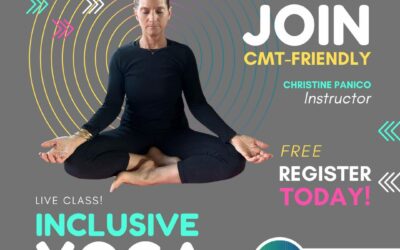
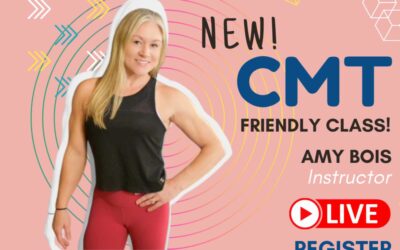
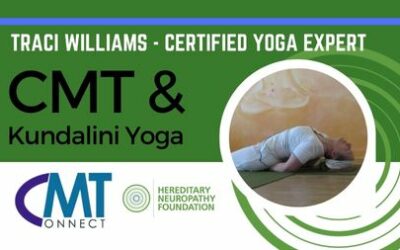
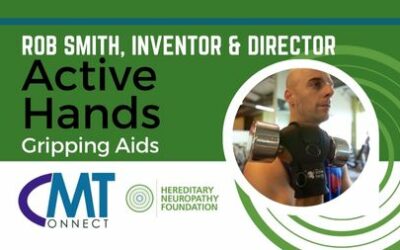
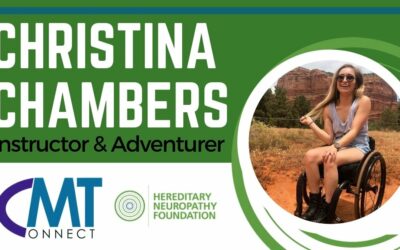
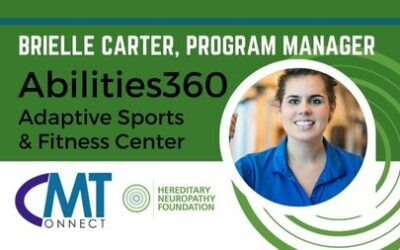
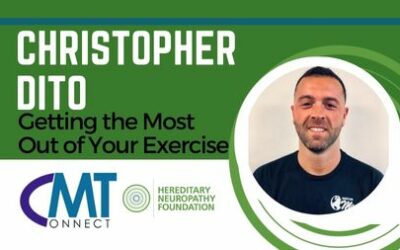
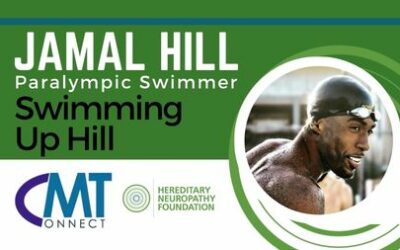
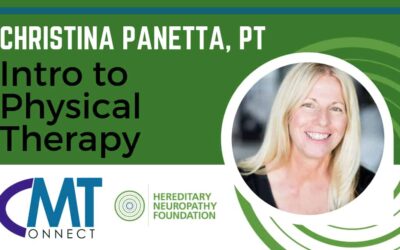
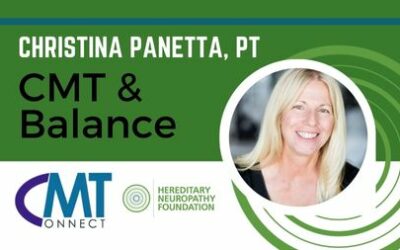
I am 54 and have been diagnosed at 32 when they told me that I will not be able to do my job for very long I am a RN. 22 years later I am still a RN who is almost 12 hours on my legs and I must the weakest and slowest one of all but still do my job. I am follow by a neuro who said that I have myopathy but I did biopsy , blood test , emg .. in my ocuntry then I go with CMT don’t know which type. I don’t have a good balance and can fall for no reason but I want to exercise but I don’t know exactly what I can do without doing wrong. I try treadmill but it was very bad after… I used poles at time for long walk .
Hello,
I have CMT 2, and Ehlers-Danlos type 3 (hypermobility). I’ve had both shoulders reconstructed twice each and my knees. Do you have any recommendations for exercises that are safe when you have ehlers danlos too?
Pulling on exercise bands, weights, etc are dangerous.
Thank you,
Laurie
Help , I’m starting physical therapy and my therapist has never even heard of the disease. I want to have surgery (tendon transfer) in about six months. Can you suggest a place we can learn about which exercise we should do. Do we focus on the Peronis longus?
I would like to know excacly what I am signing up for, I have fallen in love with a 60 Year old man who has CMT, how much can he do.
Hi im 43 yrs. Old a nd have Cmt.
Diagnosed 20 yrs ago. I would like help or info. On excersise for strenghtening my muscles.
If you can PLEASE HELP US! My husband is 71 years old and has CMT, he wears braces, which help tremendously. The only thing he does is walk at his job, he is in security, and walks a considerable amount per day. However, from my point of view, he definitely needs some specific exercises to do at home or in a gym. If you can be so kind as to help us. I feel as if he has gotten somewhat worse and needs to strengthen or at least maintain what he has in his legs! We would also like to know…Where he can actually get some Physical Therapy with “Real Professionals like the above Dr. Chetlin” We live in New Jersey. Can you highly recommend anyone in Northern New Jersey? If you cannot, please let us know if there is any facillity or person we can contact and go to that is not that far…willing to drive some though to get help. thank you so much.
You can visit HNF’s HCP Directory where you can find a doctor in your area. New doctors are added weekly. https://www.hnf-cure.org/provider-directory/
i have recently been diagnosed with CMT. I have several others on my mothers side of family who were diagnosed with type 1A. I need suggestions for exercise. I am 72 years old, 5 ft & 9 inches tall, small built but gained 15 # this year, new wt is 190 lbs , mostly in my stomach and chest area.
Hi Jerry,
Please go to https://www.inspire.com/groups/charcot-marie-tooth-cmt/ and you can ask others about what they do for exercise. We also have section on our Patient Care page https://www.hnf-cure.org/patient-care/ about exercise.
Best,
Courtney
I am an 82 year old retired teacher who probably had CMT 20 yrs before being diagnosed at Shands, UF in Gainesville, Florida 9 years ago. I have a recumbent bike and exercise each day,but also have a 3 wheel walker I use. It does not have a seat so is light and easy to maneuver. I have had AFOs which were not good for me. Now I am going to try a brace that will allow help as I stumble. I have had any falls before and after diagnosis,one time at the physical therapists who kept me exercising standing too long. I research for my own exercises at home. I have high arches, hammer toes which partly corrected in one of my falls.
Aurelia,
Thank you for your comment. I am glad you can exercise with the recumbent bike. Have you subscribed to our mailing list?
Can you tell me how the doc figured out what you have did he give you other diagnose before testing you for this . Do you walk or no.